Summary
Over the last year, miniPC manufacturers have started introducing small solid state based NAS machines for home use. Beelink has decided to entire the arena, and I’ve been extremely excited to test this out because I trust them as a manufacturer for something as critical as a NAS for data storage.


Specs
| CPU | Intel N150 (4 efficiency cores, 3.6ghz) |
| RAM | 12gb LDDPR5, Micron |
| Storage | (1) 64gb eMMC drive for OS, (1) Crucial P3 2 TB NVME drive for storage (QLC/HMB) |
| Expansion | 6 total NVME slots. 5 of these are PCIE 3.0 x 1 (~1GB/s), and 1 faster slot is PCIE 3.0 x 2 (~2GB/s) |
| Ports | (1) USB 3.2 10Gbps type C, (1) USB 3.2 10Gbps type A (1) USB 2, (1) HDMI, 4k/60hz |
| Networking | 2 x Intel v226 2.5Gbe |
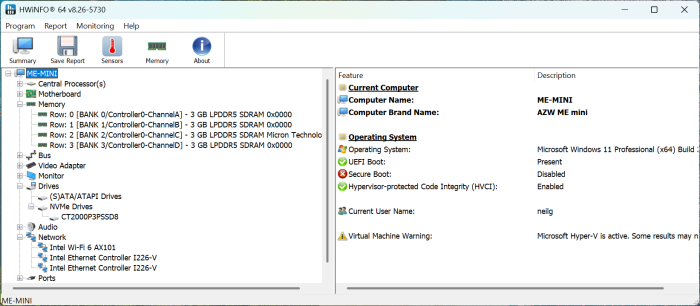
The ME Mini was designed to be an affordable, efficient, low cost machine to support lots of storage. The N150 cpu is more than capable of handling file serving tasks, and video playback/htpc use since the N150 supports AV1 hardware decode.
It’s great to see no generic parts in here – Micron/Crucial teamed up here for both the RAM and SSD. I’ve used Micron parts for over 25 years and trust them more than any other brand.
The machine could also potentially be used as a router for opnsense + file serving given the dual intel v226 ethernet ports. 12gb of ram should be sufficient for most lightweight docker/proxmox setups.
What are the limitations of these specs? Most notably, much of the performance is simply bottlenecked in a few places: (1) the PCIE 3.0×1 ports max out around 1GB/s where 3.0 NVME drives can usually hit close to 3-4 GB/s, but more importantly, (2) the 2.5Gbe (~300MB/s) ethernet ports cap things event more. Ultimately data will flow at only around 1/3 the speed of the PCIE 3.0 x 1 channels, or about 1/10th the speed of the full NVME drives.
Benchmarks
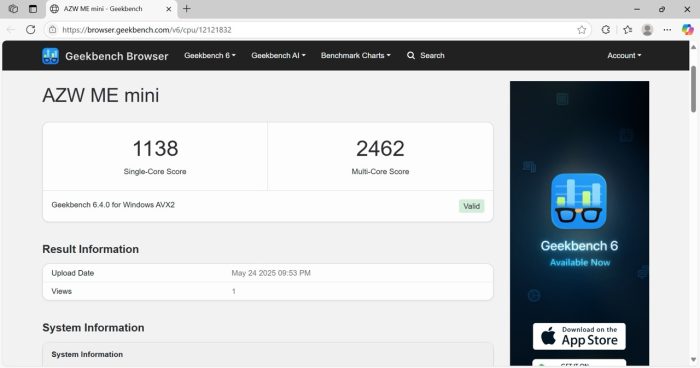
The N150 performed slightly lower than other N150 cpus we’ve seen in other mini PC’s, but we suspect this version has been slightly throttled to support the heat that may be generated from 6 NVME drives if fully loaded. Single core scores here are about 9% below the median N150 machine and about 18-20% lower in multi-core scores.
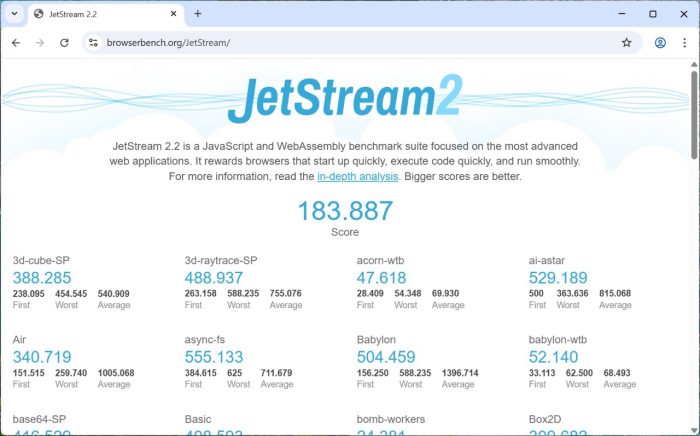
Respectable JetStream score. We don’t expect much web browsing on this machine though since it would mostly be used as a file server, router, or hybrid htpc.
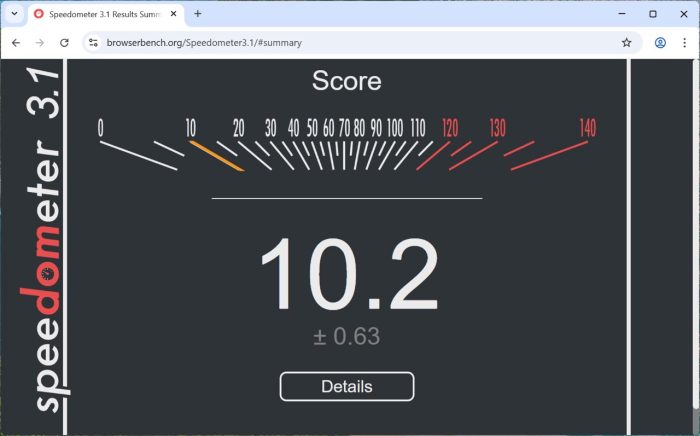
Speedometer 3.1 score
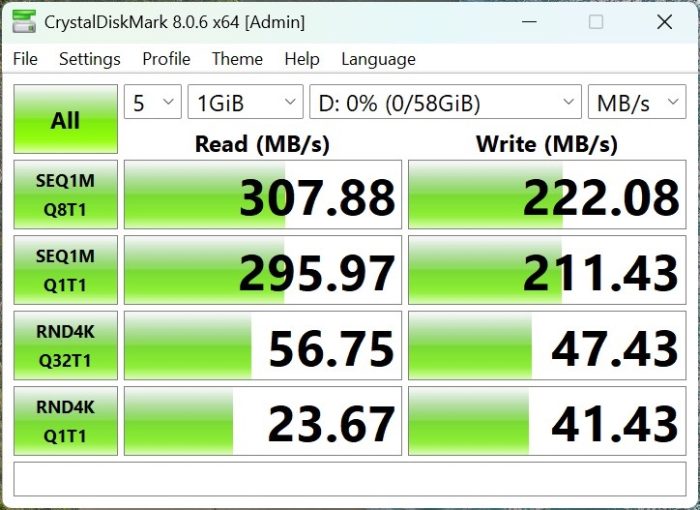
The slower eMMC drive. Nothing fancy here, but plenty usable for a lightweight router OS. These numbers are roughly in between a HDD and SATA SSD.
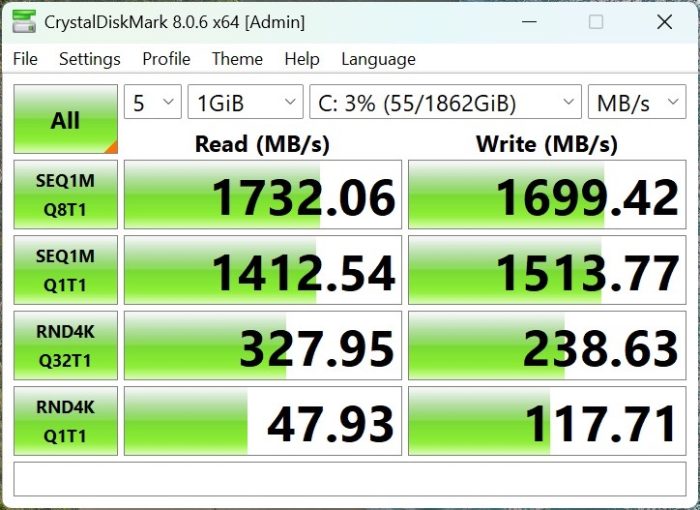
Beelink and Crucial teamed up here to offer a well known brand name Crucial P3 2TB SSD drive. These performance numbers are shown while the drive is sitting in the faster PCI 3.0 x 2 slot (max 2GB/s) which looks in line. The drive is actually capable of more if put in a PCIE 3.0 x 4 slot.
I dislike manufacturers that use no-name SSDs or RAM in their machines.
In this device the P3 is a perfectly capable SSD mostly saddled by the 2.5Gbe network ports. In future faster ME Mini NAS models that are rumored it would be great to see some TLC based SSDs with good sustained write speeds.
Thermals and Noise
The Beelink ME Mini is insanely quiet. They came up with very clver compact chassis that hosts the 6 NVME drivers vertically, and with a fan that blows the heat upwards.
The form factor is very home-friendly – it’s small, white, and quiet, and doesn’t feel like ugly networking equipment.
Thermals:
Noise: Hard to detect, roughly 29-30db at idle, and around 32-33db under load
Temperature: Roughly 78c-80c in 70-75f type ambient conditions
Idle power draw: about 10w with the stock eMMC and P3 drive installed
Strengths
- Extremely affordable price for a unique form factor
- Small footprint and clever chassis design
- Dual ethernet ports is an added bonus for routing possibilities, or link aggregation
- Both ram (Micron) and SSD (Crucial) are branded parts and not generic parts. This is a great partnership with Crucial
- Barebones machine as an option if you want to provide your own SSD
Could be improved
- 2.5Gbe ethernet ports are the biggest bottleneck
- PCIE 3.0 x 1 and x 2 ports also limit the SSDs (but less of an issue)
- N150 benchmarks slower than median N150 machines, likely due to thermal control with so many NVME drives
- No upgradable RAM, though the LPDDR5 ram is fast and lower power than SODIMM sticks
- No USB4/TB4/TB5 ports
Note: Most of the above are mostly limitations of a device at this price point. I fully expect that a “pro” version of the ME Mini NAS might address more of these. For a $200-ish base model this machine is still a great value.
Conclusion
The ME mini is really wonderful small form factor NAS.
Who is it for? Home users that have a lot of storage, and don’t want expensive, noisy, or large NAS’s sitting in their home. While the 2.5Gbe ports bottleneck performance, most users that just need media backup will do so incrementally in batches under 5-20GB at a time. Real time video editors that want to operate over a network will want to look for faster 10Gbe type NAS devices.
My suggested approach is to do a one-time load of your data by using the 10Gbps USB ports or just dropping in a pre-loaded SSD.
As always, you should keep remote backups in case of fires or floods. I personally like to use Rclone to backup most most important data to B2 in encrypted buckets for offsite backups.
I love this little device and it’s a great way to drop in your random NVME drives sitting around that don’t have a home.